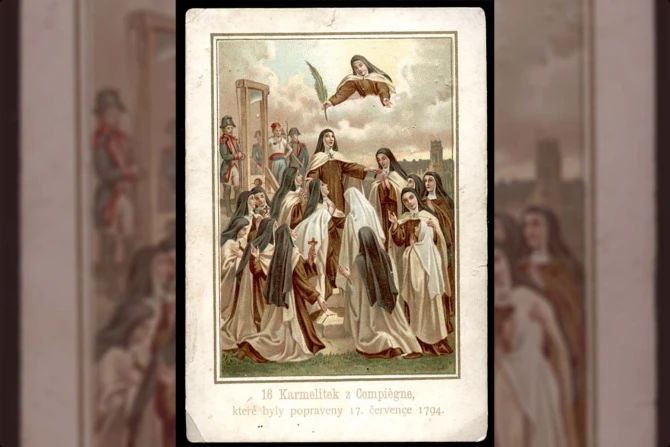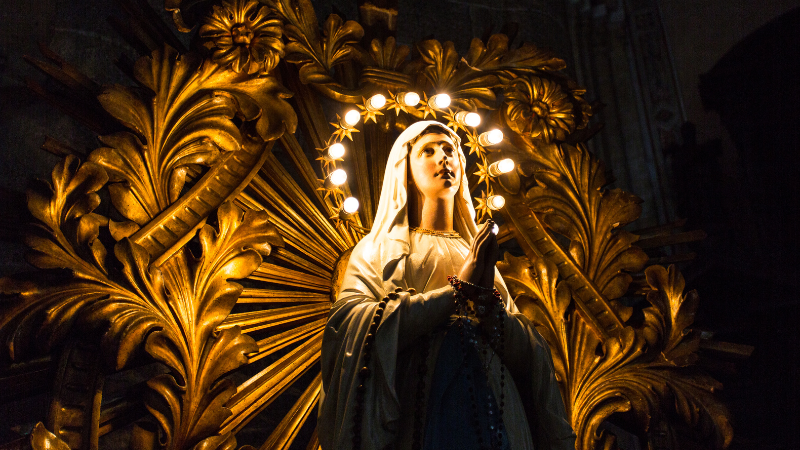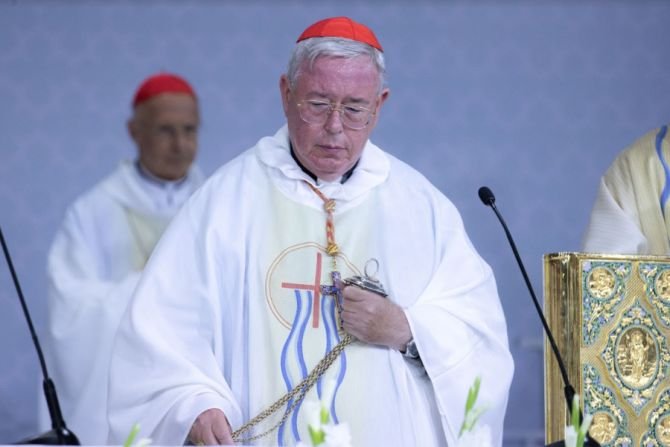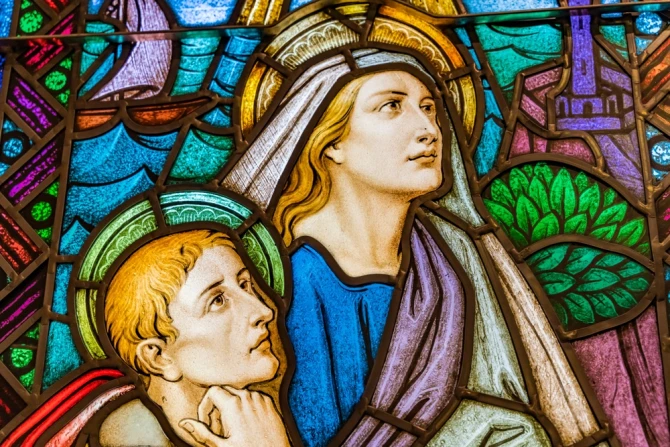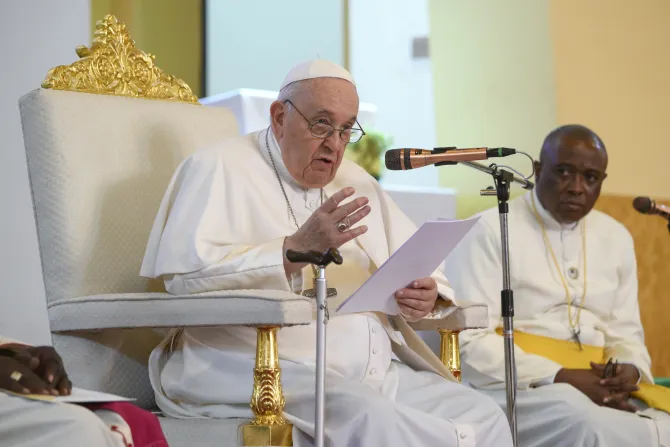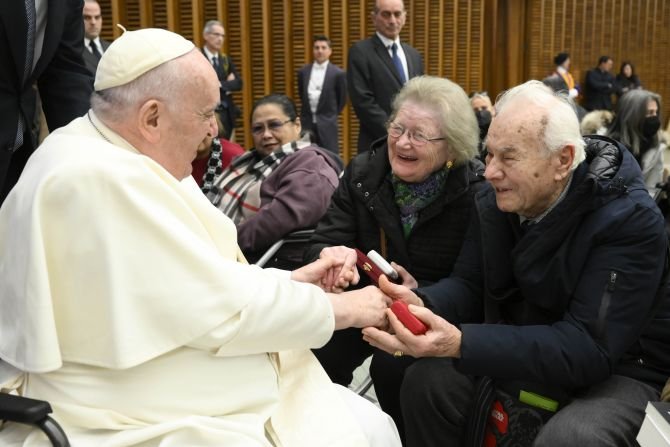Pope Francis has officially declared the 16 Discalced Carmelite nuns of Compiègne, executed during the Reign of Terror in the French Revolution, as saints through the rare procedure of “equipollent canonization.”
Mother Teresa of Saint Augustine and her 15 companions, who were guillotined in Paris as they sang hymns of praise, can immediately be venerated worldwide as saints in the Catholic Church.
The equipollent, or “equivalent” canonization, announced by the Vatican on Wednesday, recognizes the long-standing veneration of the Carmelite martyrs, who met their deaths with unwavering faith on July 17, 1794.
Their final act of courage and faith inspired Francis Poulenc’s well-known 1957 opera “Dialogue of the Carmelites,” based on the book of the same name written by famous Catholic novelist and essayist Georges Bernanos.
Like the usual canonization process, equipollent canonization is an invocation of papal infallibility in which the pope declares that a person is among the saints in heaven. It avoids the formal process of canonization as well as the ceremony, since it occurs by the publication of a papal bull.
Longtime veneration of the saint and demonstrated heroic virtue are still required, and though no modern miracle is necessary, the fame of miracles that occurred before or after a saint’s death are also taken into account after a study is made by the historical section of the Vatican Dicastery for the Causes of Saints.
Though the process is rare, Pope Francis has declared others saints through equipollent canonization, such as St. Peter Faber and St. Margaret of Costello, something that Pope Benedict XVI also did for St. Hildegard of Bingen and which Pius XI granted for St. Albert the Great.
Who were the Martyrs of Compiègne?
The martyrs, comprising 11 nuns, three lay sisters, and two externs, were arrested during a time of fierce anti-Catholic persecution. The French Revolution’s Civil Constitution of the Clergy had outlawed religious life, and the Carmelites of Compiègne were expelled from their monastery in 1792.
Despite being forced into hiding, the sisters secretly maintained their communal life of prayer and penance. At the suggestion of the convent prioress Mother Teresa of St. Augustine, the sisters made an additional vow: to offer their lives in exchange for an end to the French Revolution and for the Catholic Church in France.
On the day of their execution, the sisters were transported through the streets of Paris in open carts, enduring insults from the gathered crowd. Undeterred, they sang the Miserere, Salve Regina, and Veni Creator Spiritus as they approached the scaffold.
Before meeting her death, each sister knelt before their prioress who gave them permission to die. The prioress was the last to be executed, her hymn continuing until the blade fell.
Within the following few days, Maximilien Robespierre himself was executed, bringing an end to the bloody Reign of Terror.
The bodies of the 16 martyrs were buried in a mass grave at Picpus Cemetery, where a tombstone commemorates their martyrdom. Beatified in 1906 by Pope Pius X, their story has since inspired books, films, and operas.
The feast day of the Martyrs of Compiègne will remain July 17, commemorating the date of their martyrdom.
Other sainthood causes recognized
In addition to the equipollent canonization, Pope Francis also approved decrees advancing other sainthood causes, including the beatifications of two 20th-century martyrs: Archbishop Eduardo Profittlich, who died under communist persecution, and Father Elia Comini, a victim of Nazi-fascism.
Profittlich, a German Jesuit and archbishop, died in a Soviet prison in 1942 after enduring torture for refusing to abandon his flock in Soviet-occupied Estonia.
Comini, a Salesian priest, was executed by Nazis in 1944 for aiding villagers and offering spiritual support during massacres in northern Italy.
Pope Francis also recognized the heroic virtues of three Servants of God: Hungarian Archbishop Áron Márton (1896-1980), Italian priest Father Giuseppe Maria Leone (1829-1902), and French layman Pietro Goursat (1914-1991), who founded the Emmanuel Community.
Márton, a bishop who stood against both Nazi and communist oppression in Romania, defended religious freedom and aided the persecuted before being sentenced to life imprisonment and forced labor by the Communists in 1951. He was later released and died of cancer in 1980.
Leone, an Italian Redemptorist priest, dedicated his life to preaching, spiritual direction, and aiding communities ravaged by epidemics. Renowned as a confessor and spiritual guide, he helped renew religious life and inspire lay faithful in post-unification Italy.
French layman Pietro Goursat founded the Emmanuel Community, a movement promoting prayer and evangelization, particularly among marginalized youth. Despite personal hardships, he transformed the Sanctuary of the Sacred Heart in Paray-le-Monial into a spiritual hub and lived his final years in quiet devotion.
With the decree, the three Servants of God now have the title of “Venerable” in the Catholic Church.
This article was originally published on Catholic News Agency.

